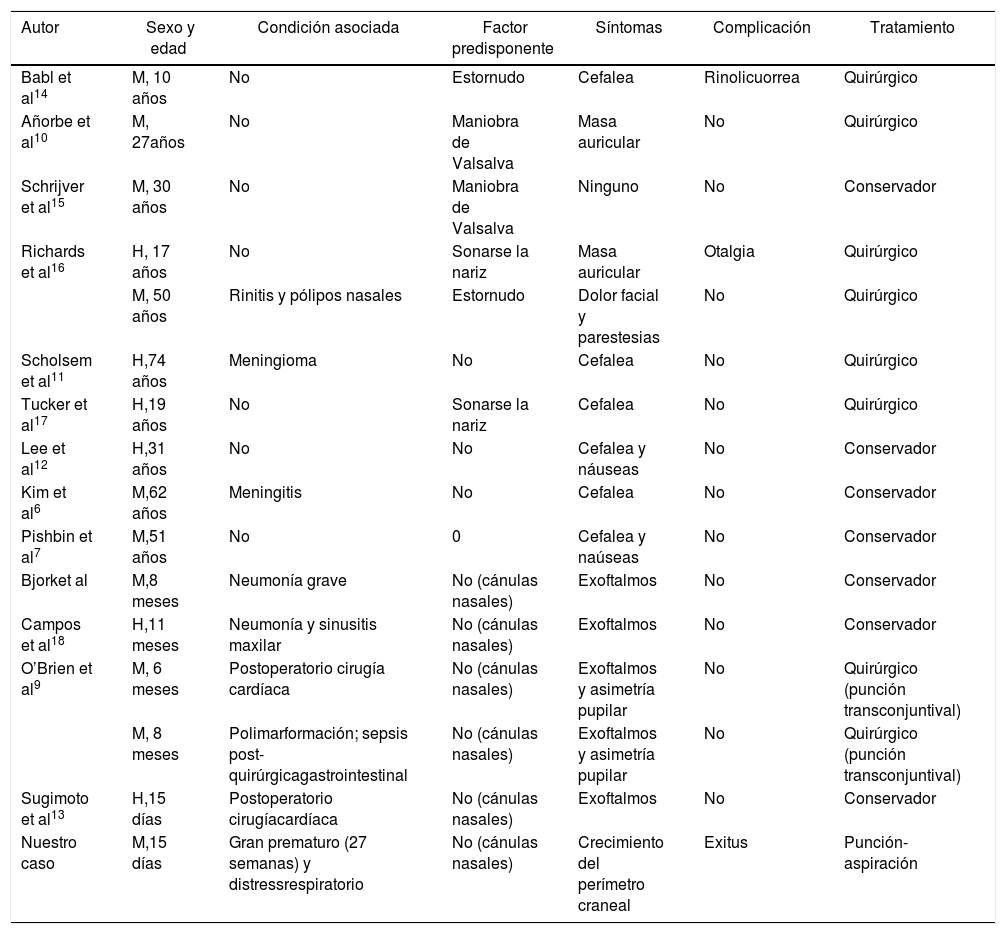El neumoencéfalo a tensión es una complicación extremadamente rara en el uso de la ventilación a presión positiva en el neonato, cuyo diagnóstico requiere un alto grado de sospecha clínica.
Presentamos el caso de un recién nacido prematuro, que recibió oxígeno a través de cánulas nasales de alto flujo debido a enfermedad de membrana hialina, propia de su prematuridad, y que desarrolló signos clínicos de hipertensión intracraneal. La ecografía transfontanelar y la TAC craneal pusieron de manifiesto un importante neumoencéfalo a tensión que fue evacuado a través de punción directa a través de la fontanela anterior.
Tension pneumocephalus is an extremely rare complication of positive-pressure ventilation in neonates, the diagnosis of which requires a high degree of clinical suspicion. We present the case of a preterm newborn, who received high-flow nasal cannula oxygen therapy because of hyaline membrane disease, due to his prematurity, and developed clinical signs of intracranial hypertension. Transfontanellar ultrasound and cranial CT scan revealed significant tension pneumocephalus, which was evacuated with direct needle puncture through the anterior fontanelle.
Article

If it is the first time you have accessed you can obtain your credentials by contacting Elsevier Spain in suscripciones@elsevier.com or by calling our Customer Service at902 88 87 40 if you are calling from Spain or at +34 932 418 800 (from 9 to 18h., GMT + 1) if you are calling outside of Spain.
If you already have your login data, please click here .
If you have forgotten your password you can you can recover it by clicking here and selecting the option ¿I have forgotten my password¿.










